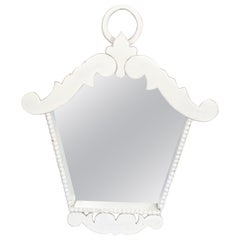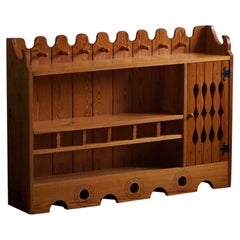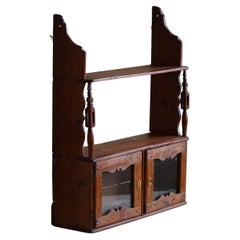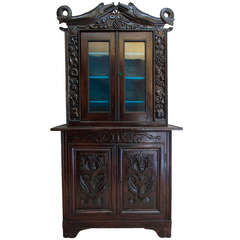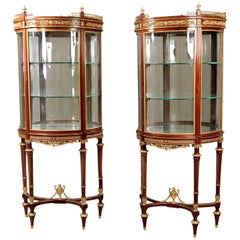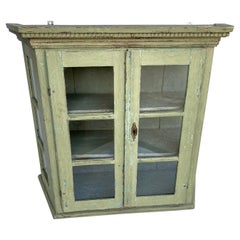Folk Art Vitrines
Folk art is a genre of art that shares the creator’s traditions, offering not just an artistic display but an opportunity to learn about a culture. Antique, new and vintage folk art typically reflects a heritage or location. It can include utilitarian objects and handmade art as diverse as weather vanes, duck decoys, portraiture and paintings, carnival art and quilts.
Quilts are a quintessential part of American folk art but their roots are international, with quilting dating back to Ancient Egypt. The practice spread to Europe and was especially prominent in the Middle Ages, with one of the oldest surviving examples being the Tristan quilt made in Sicily in the 14th century. They were made as bedcovers and clothing, including as a layer for knights to wear beneath their armor. Native American folk art includes functional objects reflecting their heritage, such as baskets, textiles and wooden pieces.
Elsewhere, the vast range of work associated with Mexican folk art includes masks made by Mexican craftspeople for traditional celebrations and ceremonial dances. Mexican masks are part of the country’s folk-art traditions that go back thousands of years and play a role in festivals and theater.
Works in the folk art tradition are valuable because of the skills involved, like weaving, hand-carving wood and even stonework. Many folk artists are self-taught, while some train as apprentices within their community. By using available materials and taking a personal approach to their creations, artists ensure each piece is unique and conveys a story.
During the Great Depression, artistic materials in America were hard to come by, so artisans used discarded wood from cigar boxes and shipping crates to make highly stylized, notched pieces — most often picture frames and boxes — that are today sought after by collectors. This folk art style is called tramp art and was popular from roughly 1870 until the 1940s.
Folk art brings vibrant culture and traditions into your home. Browse an extensive collection of antique, new and vintage folk art on 1stDibs.
1940s American Vintage Folk Art Vitrines
Wood
Early 20th Century Swedish Folk Art Vitrines
Pine
Late 19th Century Swedish Antique Folk Art Vitrines
Glass, Pine
Early 20th Century French Folk Art Vitrines
20th Century English Folk Art Vitrines
Mahogany
Late 19th Century French Antique Folk Art Vitrines
Bronze
Early 20th Century Italian Folk Art Vitrines
Walnut
Mid-20th Century English Folk Art Vitrines
Glass, Walnut, Plywood, Bentwood
1920s Italian Vintage Folk Art Vitrines
Crystal
Mid-20th Century English Folk Art Vitrines
Glass, Walnut
1930s Swedish Vintage Folk Art Vitrines
Pine
Early 20th Century American Folk Art Vitrines
Glass, Mahogany, Rosewood
1920s Vintage Folk Art Vitrines
Glass, Oak
1940s French Vintage Folk Art Vitrines
Oak
Mid-20th Century English Folk Art Vitrines
Glass, Walnut
Mid-20th Century English Folk Art Vitrines
Glass, Walnut
Late 18th Century Danish Antique Folk Art Vitrines
Oak
Early 20th Century Folk Art Vitrines
19th Century Honduran Antique Folk Art Vitrines
Glass, Cedar
19th Century American Antique Folk Art Vitrines
Wood, Glass
Early 20th Century American Folk Art Vitrines
Wood
